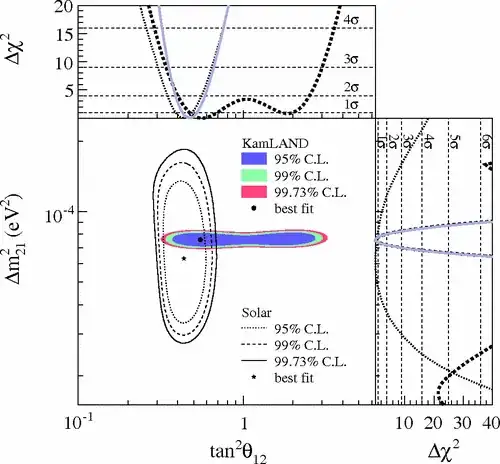The Dirac $CP$ phase $\delta_{CP}$ in the $U_{PMNS}$ mixing matrix lead to the $CP$-violation in the Lepton sector. I think this can be tested by comparing neutrino flavour oscillation probabilities with anti-neutrino flavour oscillation probabilities. If only neutrinos are produced in Sun but not antineutrinos, how can one measure and compare two probabilities?
1 Answers
Anti-neutrinos are produce in copious quantities by nuclear reactors, in the atmospheric interactions of cosmic rays and can be produced on-demand at accelerators. Indeed, given the nature of the interaction of normal and anti-neutrinos it is arguable that anti-neutrinos are easier to deal with experimentally at low energies.
It is worth noting that the first unambiguous observation of neutrino interactions was of reactor anti-neutrinos.
But so far the available data simply isn't precise enough to detect a difference between matter-type and antimatter-type neutrino oscillation parameters.. This is something that the community has been building up to for some time. I think the smart money right now is on NO$\nu$A, and if they have some unexpected problem DUNE will be along to lend a hand.
One of the interesting issues is that some of the data has good resolution in $\Delta m$ and poor resolution in $\theta$ and other data sets turn that around. If you combine them under the assumption of CP symmetry then you get a good overall result, but of course that won't tell you that if CP is violated. Here's a figure from a KamLAND paper showing how this works:
(Figure from https://journals.aps.org/prl/abstract/10.1103/PhysRevLett.100.221803 )
